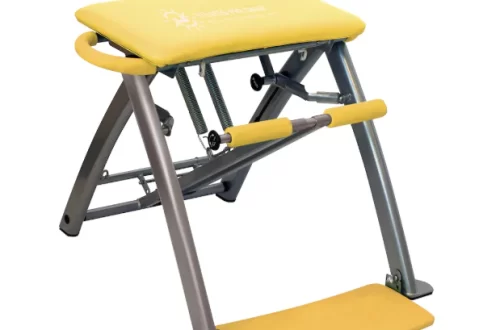Chair Squats
Week 2: Building Routine
Day 11-13: Strength & Balance – Introduce light bodyweight exercises such as wall push-ups, chair squats, and calf raises. Combine this with 10 minutes of balance exercises like standing on one leg.
Chair Squats, A Gentle Exercise
Chair squats are a low-impact exercise, simple yet effective exercise that is great for those with mobility issues, seniors, people with sedentary lifestyles, or individuals managing arthritis. Let’s explore how you can incorporate chair squats into your daily routine for better health and fitness.
What Are Chair Squats? Chair squats, also known as sit-to-stands, are a modified version of traditional squats. They involve the simple motion of sitting down on a chair and standing up again. This exercise targets multiple muscle groups, including your quadriceps, hamstrings, and glutes, while also engaging your core for stability.
Benefits of Chair Squats
- Improved lower body strength
- Enhanced balance and stability
- Increased independence in daily activities
- Low-impact exercise, gentle on joints
- Can be done anywhere with a sturdy chair
How to Perform Chair Squats
- Choose a sturdy chair with a straight back and no wheels.
- Sit on the edge of the chair with your feet flat on the floor, hip-width apart.
- Lean slightly forward, keeping your back straight.
- Slowly stand up, pushing through your heels and using your leg muscles.
- Once standing, pause briefly.
- Slowly lower yourself back down to the chair.
- Gently touch the chair with your bottom, but don’t fully sit.
- Immediately stand up again.
Variations
To add variety to your routine and challenge different aspects of strength and balance, try these variations of chair squats:
- Partial Chair Squat:
- Instead of fully sitting down, lower yourself only partway.
- Hover just above the chair seat for a moment before standing back up.
- This variation can be more challenging and helps build endurance.
- Single-Leg Chair Squat:
- Start seated, then stand up using only one leg.
- Extend the other leg slightly in front of you.
- Lower yourself back down using the same leg.
- This variation improves balance and works each leg independently.
- Squat with Arm Raise:
- As you stand up, raise your arms straight out in front of you or above your head.
- Lower your arms as you sit back down.
- This adds an upper body component and can improve overall coordination.
- Pulsing Chair Squat:
- Lower yourself until you’re almost touching the chair.
- Instead of sitting or standing fully, pulse up and down in small movements.
- Do 5-10 pulses before returning to the starting position.
- This variation increases time under tension for the muscles.
- Squat with Side Leg Lift:
- Perform a standard chair squat.
- Once standing, lift one leg out to the side as far as comfortable.
- Lower the leg and sit back down.
- Alternate legs with each rep.
- This variation works on lateral stability and hip strength.
- Isometric Hold:
- Lower yourself to just above the chair seat.
- Hold this position for 5-30 seconds, depending on your strength.
- Slowly return to standing.
- This static hold builds endurance and control.
Remember to start with the basic chair squat and progress to these variations only when you feel comfortable and stable.
Success Tips
- Start with 3-5 repetitions then gradually increase to 5-10 repetitions as you build strength.
- Use armrests for support if needed but try to rely on them less over time.
- Keep your movements slow and controlled.
- Focus on your breathing: exhale as you stand, inhale as you sit.
- If you have balance issues, place the chair near a wall for added security.
Modifications for Different Needs
- Arthritis: Use a higher chair to reduce the range of motion if needed.
- Mobility Issues: Place a pillow on the chair for added comfort and height.
- Sedentary Individuals: Start with fewer repetitions and increase gradually.
- Balance Concerns: Hold onto the back of another chair or a countertop for support.
Incorporating Chair Squats into Your Routine
Try to perform chair squats 2-3 times a day, with 5-15 repetitions each time, depending on your ability. You can do them while watching TV, during commercial breaks, or as part of a structured exercise routine.
Remember, consistency is key. Even a small amount of exercise done regularly can lead to significant improvements in strength and mobility over time.
Important
- Consult Your Healthcare Provider: Before starting any new exercise routine, it’s important to consult with your healthcare provider, especially if you have existing health conditions or concerns. They can provide personalized advice and ensure that chair squats are safe for you.
- Listen to Your Body: It’s crucial to pay attention to how your body feels during and after exercises. If any movement causes pain, adjust the exercise or skip it altogether.
- Start Slowly: Begin with a few repetitions and gradually increase as your comfort level improves. Consistency is more important than intensity.
- Focus on Form: Ensure you are using proper form to avoid further strain on your joints. Keeping movements slow and controlled is key. Always prioritize proper form and safety over the number of repetitions or variations performed.
By incorporating chair squats into your daily routine, you’re taking an important step towards improving your strength, balance, mobility, and overall quality of life. Start small, be consistent, and celebrate your progress along the way!



